A Stroll Through Almaty
- charlsiedoan
- Jun 15, 2024
- 5 min read
Updated: Oct 14, 2024

I don’t know why more people don’t visit Almaty. As cities go, it’s pretty perfect. I’m sitting at a cafe table outside, under the shade of giant, green trees, watching people scoot by (walking or on electric scooter). A cappuccino with a milk-foam seahorse poured into the top sits in front of me.
Almaty is beautiful—clean and park-filled, pedestrian-friendly and kid-friendly, peppered with murals and old Russian architecture. There are cafés on every street that are open until midnight and a very-deep-underground metro with marble floors that are polished daily. Crystalline blue lakes and wildflower-carpeted meadows are only a two or three hour drive away. Small canals channel icy water along the city streets. Snow-capped mountains proudly sit above the horizon in the distance, and trees line every street, providing shade from the sun that isn’t too hot, even in June.
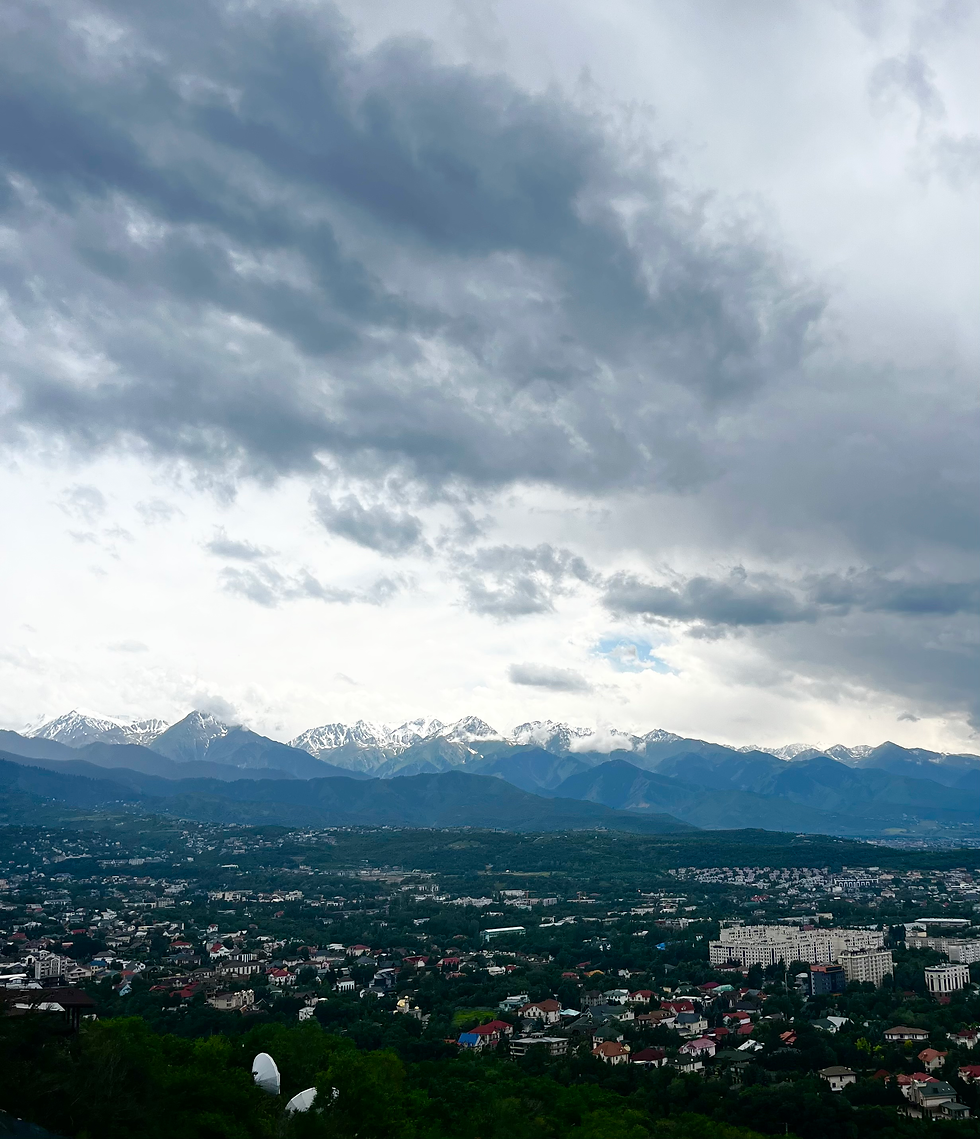
Almaty may be in southeastern Kazakhstan, closer to China and Kyrgyzstan than it is to Russia, but it feels much more western than Tashkent (which is actually further west). There aren’t people selling things on the street. Kazakhs drink milky black tea instead of Chinese green tea, and although the Kazakh language is Turkic, it’s written in Cyrillic (although they’re trying to switch to the Latin alphabet slowwwwwly). Russian is the lingua franca, not English.
But although Kazakhstan is trying to become maybe less Russian, you can very much see Russia as you walk through the streets. Almaty was built by the imperial Russians and then the Soviets, both because it didn’t really exist as a large city before Russian colonization and because chunks of it kept getting destroyed by earthquakes during Soviet times. When Hotel Kazakhstan was built, standing at more than twenty stories, city officials were nervous it couldn’t withstand an earthquake. Naturally, they installed an “earthquake simulator” on the building’s roof and had it shake the building back and forth. The hotel passed the test with flying colors.
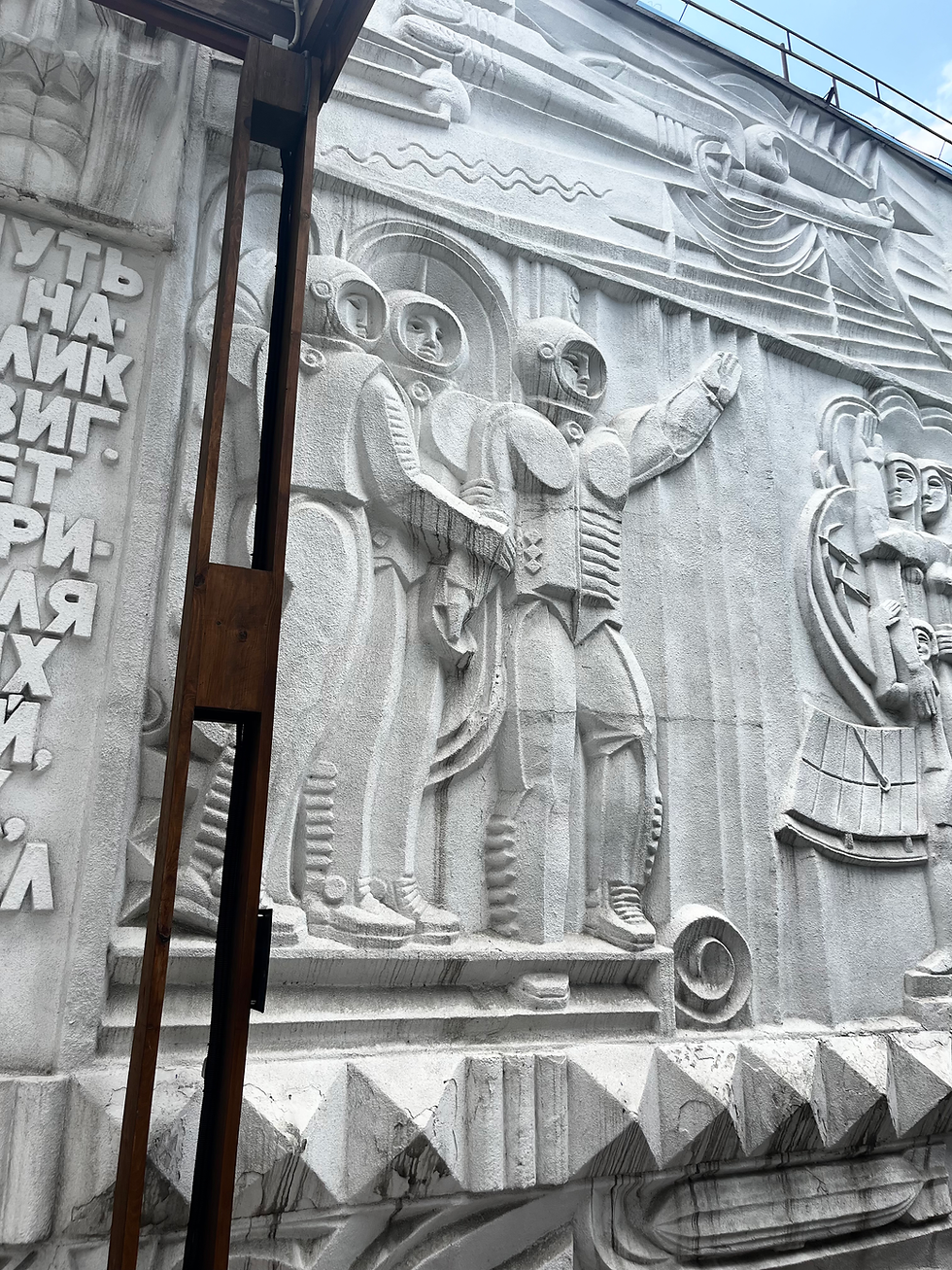
Bas-reliefs carved into the side of a Soviet-era movie theater depict cosmonauts and tractors. A Russian orthodox cathedral sits in the center of Paniflov Park. There’s a street named after Alexander Pushkin. Old ministry buildings (Almaty was the Kazakh SSR’s capital) are built in Soviet brutalist style, the facades made out of stone hewn from near the Caspian Sea. If you look closely, you’ll see that the stone is made entirely of calcified seashells. The Academy of Sciences was built in the Russian imperial style, with little nods to Islamic architecture to symbolize science replacing Islam as the people’s religion. The academy was the new mosque.
Kazakhstan is seventy percent Muslim but almost no women wear the veil. As one Kazakh guy told me: “we’re Muslim mostly just because we were born Muslim, that’s it.” He said that people do fast during Ramadan though, because “it’s a free pass for all your sins, so it seems like a good idea.” My walking tour guide said that Islam in Kazakhstan is still blended with the pagan, animist traditions of nomadic times, the worship of nature and cults of ancestors and all that. A fountain in upper Kazakhstan depicts the twelve animals of the eastern calendar—but here, the dragon is replaced by a snail and the rat becomes a steppe mouse.
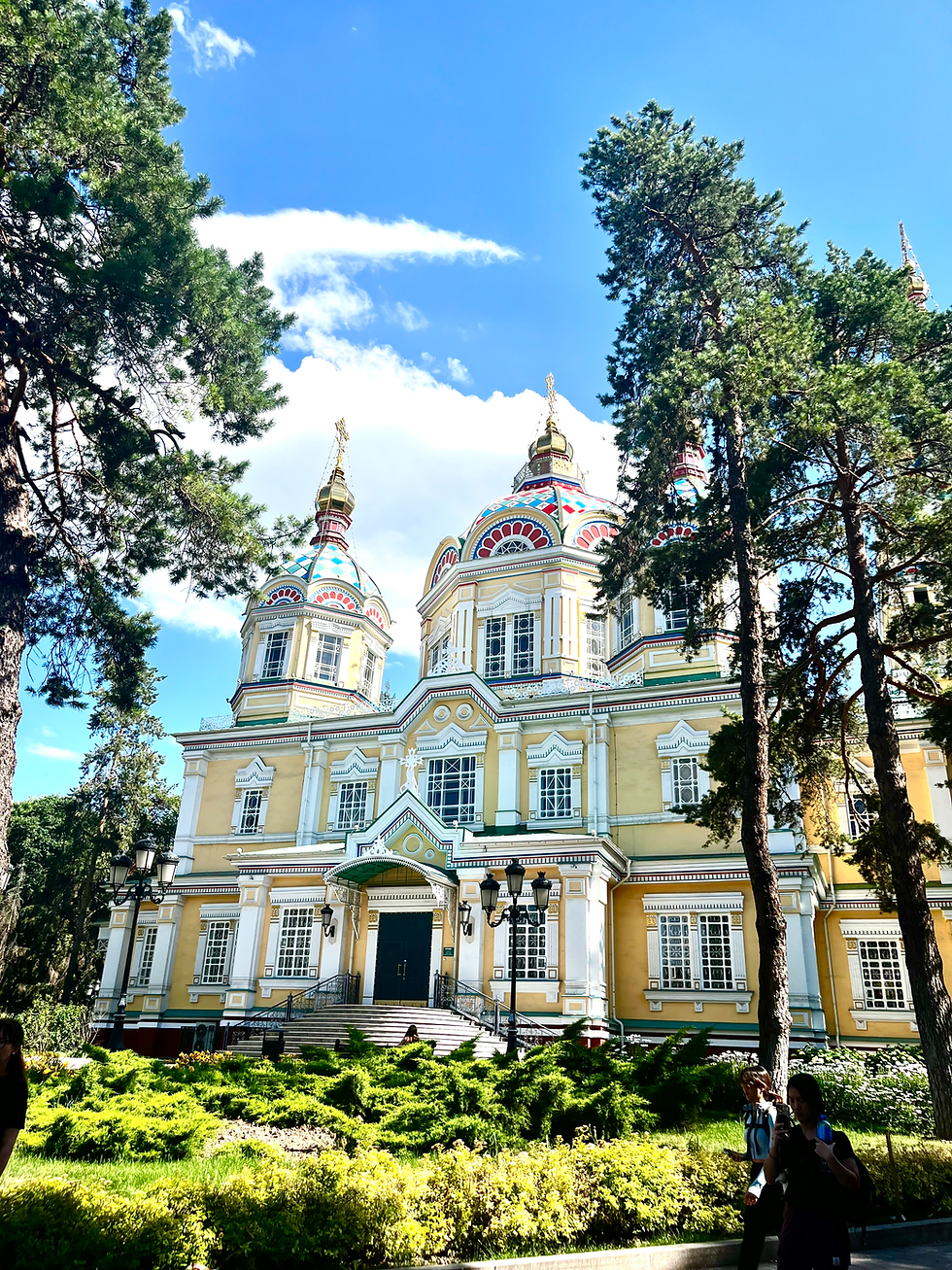
You can drink alcohol in Almaty, although stores can only sell it between the hours of noon and nine p.m. My tour guide took me to a minimart that skirted that rule by registering with the city as a bar. You aren’t going to find much pork here, though.
But if you look closely, Almaty is not a Russian city; it’s a modern Kazakhstani city. It’s sprinkled with statues of Kazakh intellectuals and writers (albeit, installed by the Russians). A mosaic on the side of Almaty Hotel tells the story of Kyz-Zhibek, Kazakhstan’s own passionate-but-doomed lovers story (every nation has to have one, obviously). Murals by local and international artists cover the city, too, including one depicting the letters QZ (for Kazakhstan) in silvery balloon letters. Giant painted apples dot the landscape, because the forests around Almaty are reported to be the genetic birthplace of the apple. Almaty’s old name was Alma-Ata, meaning “father of the apple.” In the Green Bazaar, the market in lower Almaty, there are piles of apples of every color and size.
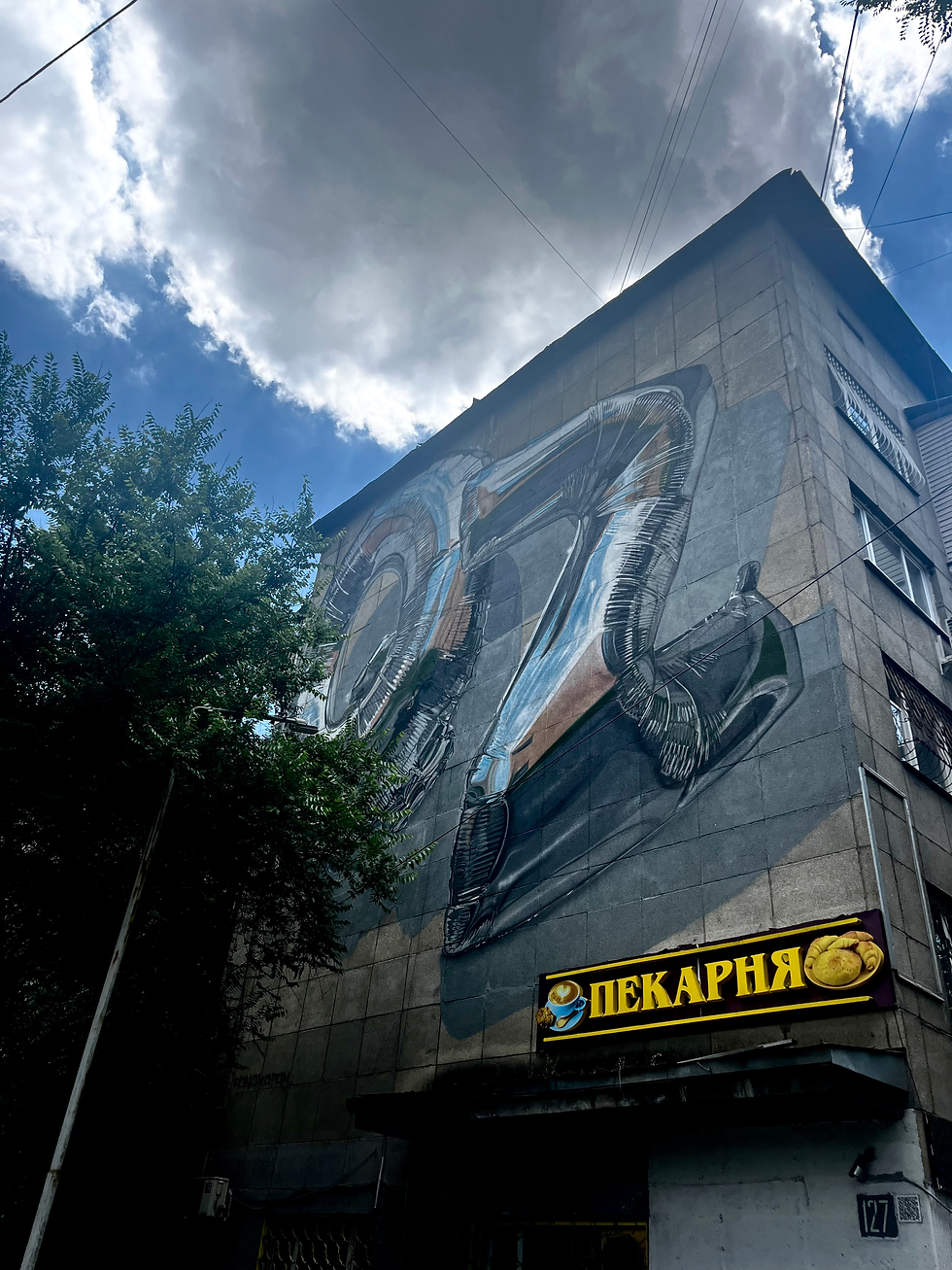
“Lower” Almaty is actually the northern part of the city, called “lower” because it’s lower in elevation and further from the mountains. This is where I stayed, near a bustling pedestrian area with shops and cafés and a twenty-four-hour grocery store that I visited once a day to buy a Ritter Sport chocolate bar. I could walk ten minutes to the Zhibek Zholy metro station, right next to the grocery store, and ride for two stops along Almaty’s single metro line and find myself at Abai, the old part of the city closer to the mountains.
There is one thing that you might find hard about Almaty: there’s not much English. You can get by with a downloaded translator app, but it does make it hard to meet people and strike up conversations. I do feel a little isolated, but that’s also probably because I am rather peopled-out after Uzbekistan and because I feel bad asking people to speak in a language that isn’t their own in a country that IS their own. A girl told me sorry in English in the hostel bathroom after she almost hit me with the door, and I fell over myself with joy.
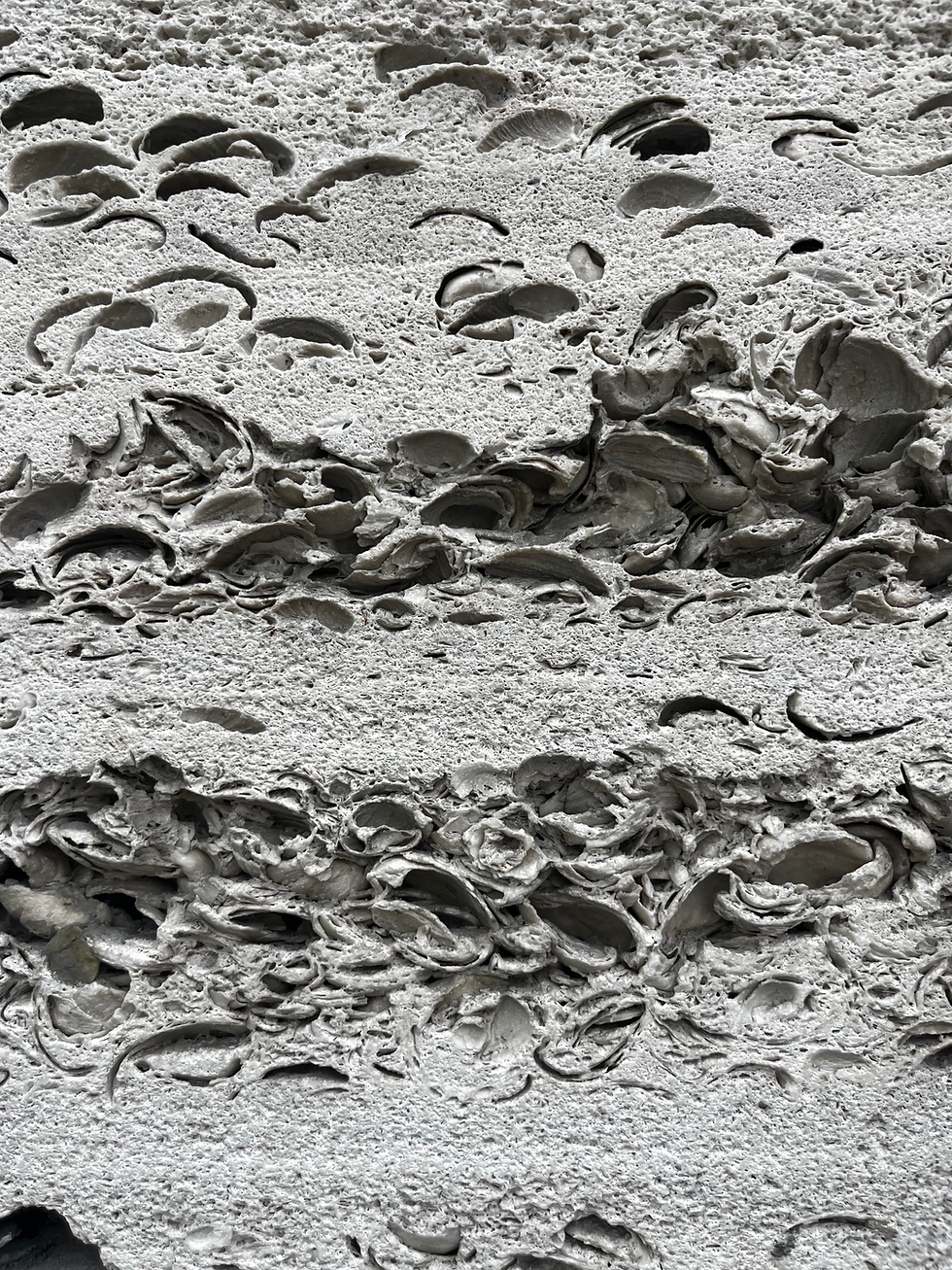
To top it off, Almaty is very cheap for Americans and Europeans. One U.S. dollar is worth just under five hundred Kazakhstani tenge. And unlike in Uzbekistan, you can pay almost everywhere with card, although there are plenty of ATMs and state-owned currency exchanges around if you want to use cash. Just don’t be like me and get confused and withdraw way more than you possibly need.
You can have meal at a café or a canteen for less than five dollars (try Kaganat, a chain open twenty-four hours with excellent plov), or a nice meal at a nice restaurant for eleven or twelve dollars, including bottled water and alcohol. My first night in Almaty I did just that at Shipudim; I had a beer, eggplant salad, manti, and a bottle of water and it was delicious. A latte is two or three dollars, and you can get a taxi from the airport for eight dollars (I recommend using Yandex Go, like in Uzbekistan). You can enter the museums for about a dollar. You get the point.
And finally, Americans, Europeans, and even Iranians can enter Kazakhstan for tourism purposes without a visa! So, there’s really no reason not to come on over.

Wow, Charlsie, your wriitiing makees this sound so inviting! I'm glad you're loving it!